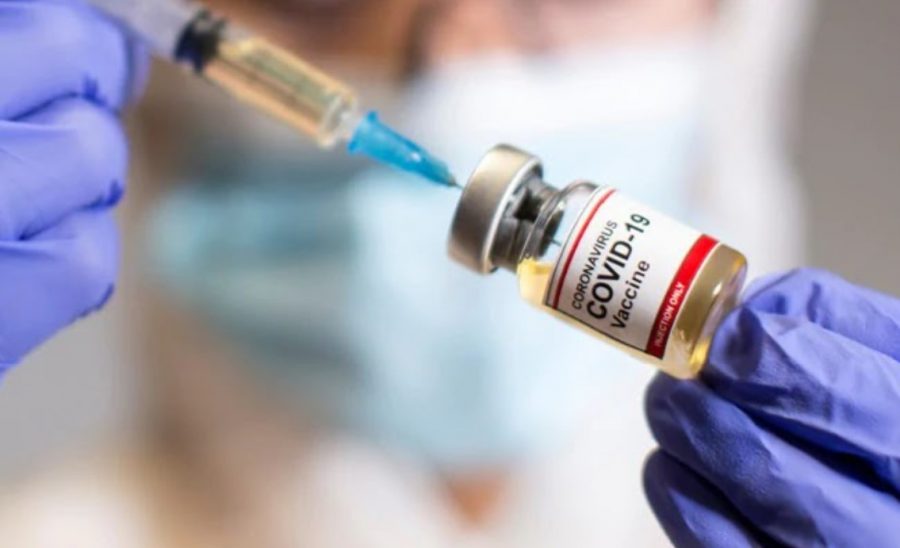The Science Behind the COVID Vaccine
With most Lakesiders finally back at school, re-opening could mark the beginning of the end of quarantine for many of us. To thank for this light at the end of the tunnel is the impending reality of a COVID vaccine. So how does the new vaccine work?
First, it should be understood how the virus itself operates. By now, many people are very familiar with illustrations of the COVID-19 virus, often depicted as a sphere covered in red spines or protuberances. These features, which give the virus its distinctive crown-like appearance from which the name “coronavirus” is derived, are in fact known as spike proteins or S proteins, a type of transmembrane glycoprotein found on the surface of the viroid’s envelope. Spike proteins can be divided into two subunits, S1 and S2, whose function is to perform the two steps of cell infection.
The role of the N-terminal S1 domain is to detect, locate, and bind itself to host cell receptors—in the case of COVID, the ACE-2 protein. The C-terminal S2 domain deals with fusing the viral envelope, a protective coat of infected host cell membranes employed by various viruses, directly to the host membrane. It does so by tangling together two sequences of amino acids called heptad repeats into a bundle, pulling the virus and cell close enough together to fuse. The RNA strands are then passed on into the infected cell, which essentially provides it with an instruction manual for making new self-assembling virus parts. From there, offspring either “bud” from the cell—diffuse through its outer membrane—or explode out of it in a process called “lysing,” destroying it.
Ordinarily, vaccines work by isolating a virus’ antigens and injecting them into the bloodstream. Antigens are the parts of pathogens that tip off dendritic cells, the immune system’s guard dogs and interpreters, to the threat of viral infection. When a vaccine is administered, the dendritic cells break up the antigens and adorn themselves with them, ensuring that the next time that antigen shows up in the body, the immune system will be prepared to attack it.
The COVID vaccine works a little bit differently. Having RNA instead of DNA genomes is a relatively unique property, and immunologists plan on taking advantage of that. Instead of injecting the antigens themselves, the vaccine will carry the RNA instructions for making the antigens, which in the case of COVID, are pieces of the spike protein. The RNA strands are carried into the body in tiny particles of fat to keep the immune system from reacting drastically to out-of-place RNA, which the immune system is likely to interpret as a sign of viral or bacterial infection, then ingurgitated into the dendritic cell’s interior upon injection.
The space the RNA then finds itself in is called the cytoplasm, a semifluid goo between the plasma membrane and nucleus that houses most cellular activity and the cell’s organelles. One such organelle is the endoplasmic reticulum, a web of tubules spanning out from the membrane of the nucleus such that it looks a bit like an unfinished labyrinth. The exterior surface of this organelle happens to be lined with particles called ribosomes which, once the RNA attaches to them, can decode those directions and put together large quantities of antigens, spurring the same response that the immune system has to traditional vaccines. Because they aren’t attached to complete viroids, they don’t risk contraction of the disease, but do ensure that the body will be able to deal with the SARS-CoV-2 virus if it shows up again.
While the idea of immunity is exciting, it’s also important to remember that the vaccine will not immediately bring things back to normal. After getting a shot, people will have to wait another three to four weeks before getting their second, which not all Americans will remember or be willing to take. Polls measuring the percentage of citizens who would take a vaccine vary drastically, with some rates as low as 41% and others as high as 73%. Either way, we don’t yet know what the necessary percentage of people is to achieve herd immunity for this virus, so it’s possible that even after all those who can be made to are vaccinated, certain cautionary measures will still need to be taken.
Once Tatler’s least prolific writer, Eliot now contents himself with a calling that lends itself better to procrastination. He also co-edits IMAGO, Lakeside’s...

